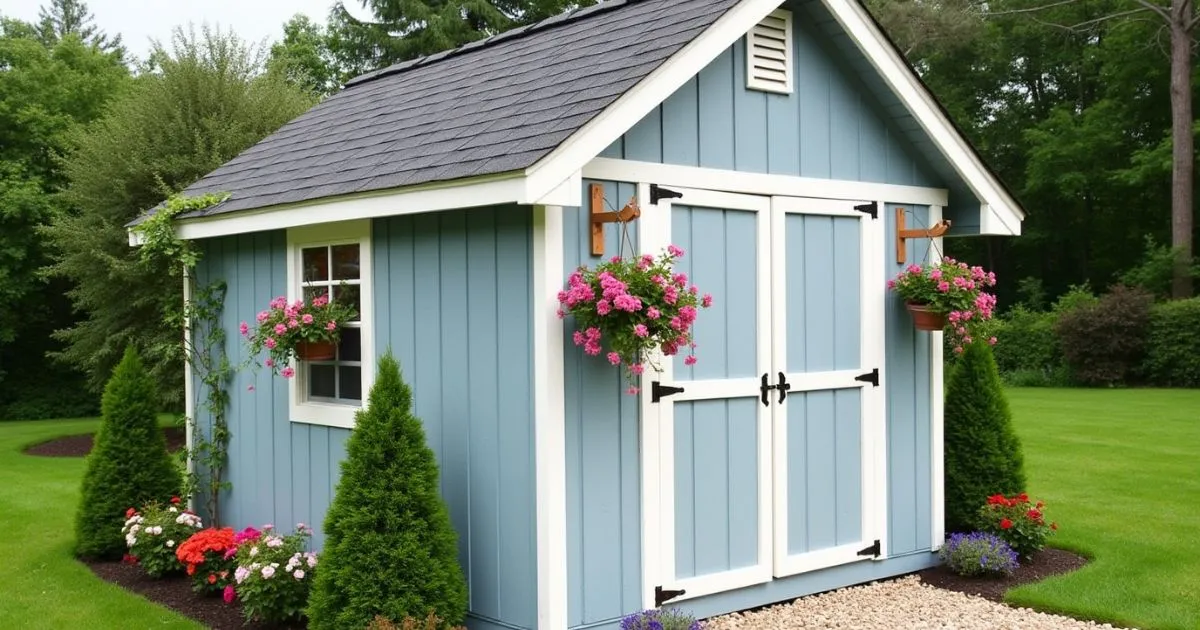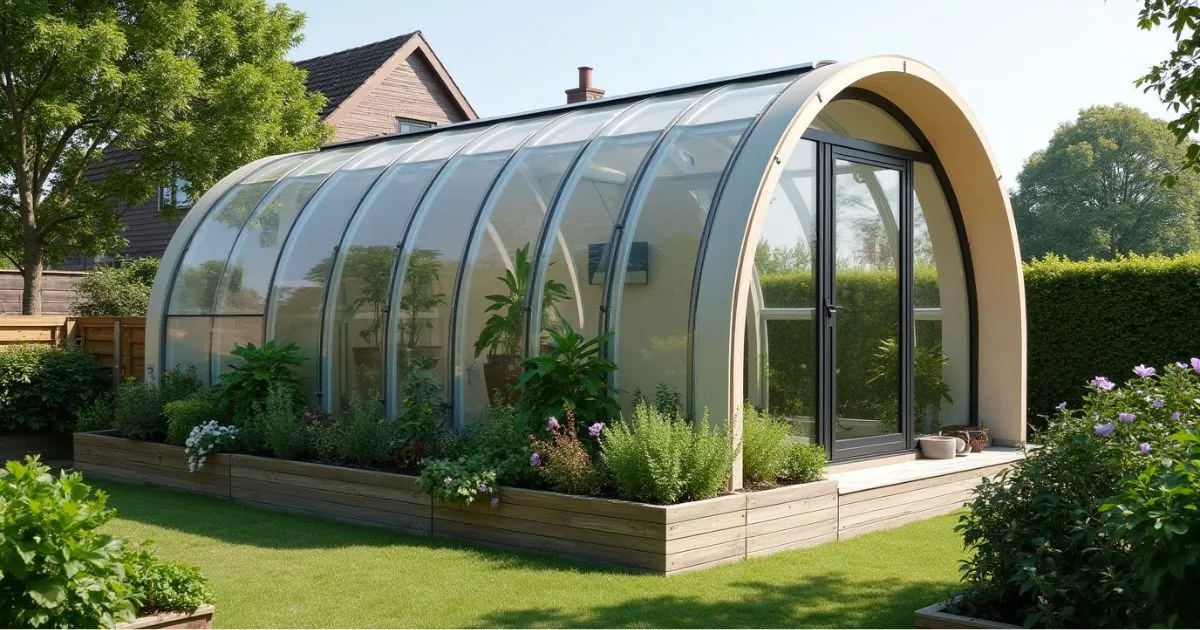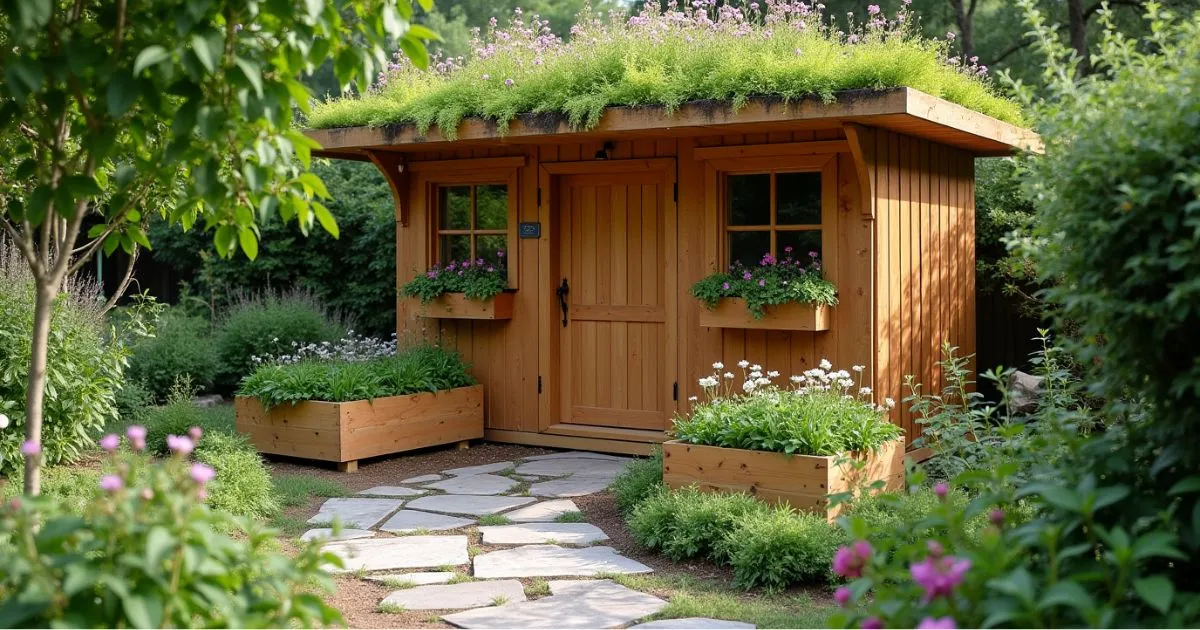Garden Shed Roof Design: 7 Stunning Ideas to Elevate Your Space
Transforming your garden starts with thoughtful choices, and your shed roof design is no exception. A well-designed roof isn’t just about functionality—it can also enhance the character of your outdoor space. By selecting a style that complements your garden’s aesthetic, you’ll create a shed that’s both practical and visually appealing.
Whether you’re building a new structure or upgrading an existing one, your roof choice plays a significant role in durability, weather protection, and overall impact. This guide offers seven stunning ideas for garden shed roof designs, ensuring your space is both functional and inspiring. Let’s dive into these creative options to find the perfect fit for your outdoor sanctuary.
Table of Contents
1. Pent Roof Shed: Sleek and Modern

A pent roof is a go-to choice for simplicity and clean lines. It features a single sloping surface, offering a contemporary look for modern garden settings.
Why Choose a Pent Roof?
- Simplicity: The straightforward design makes construction a breeze.
- Efficient Drainage: Rainwater easily slides off the sloped surface, reducing pooling.
- Space-Saving: Ideal for gardens with limited room.
Materials to Consider
For longevity, consider:
- Metal Roofing: Offers durability and weather resistance.
- Asphalt Shingles: Cost-effective and easy to install.
- Polycarbonate Panels: Perfect for sheds doubling as greenhouses.
Example:
Picture a sleek pent roof shed tucked into the corner of your garden. With metal roofing, it houses your gardening tools while blending seamlessly with minimalist landscaping. Add a vertical garden to one side for a stylish touch.
Pro Tip:
Pair the pent roof with neutral colors like gray or white to achieve a sleek, modern aesthetic.
2. Gable Roof Shed: Timeless Elegance

The gable roof stands out with its classic triangular shape, perfect for both function and style.
Benefits of a Gable Roof
- Ample Storage: The steep pitch creates space for overhead storage.
- Ventilation: Allows air to circulate, reducing moisture buildup.
- Weather-Resistant: Handles heavy rain and snow effortlessly.
Styling Tip
Enhance your shed’s charm by painting the gable ends in contrasting colors. Add decorative trims for a farmhouse feel.
Example:
A small gable-roofed shed with pastel blue paint and white trim can create a cottage-like atmosphere. Install hanging flower baskets or a climbing rose on the exterior for added charm.
Pro Tip:
For areas prone to snow, increase the roof’s pitch to prevent buildup and ensure durability.
3. Gambrel Roof Shed: Rustic Charm

Known for its barn-like structure, the gambrel roof adds a rustic touch to any garden.
Key Features
- Design: Two slopes on each side, with the lower slope steeper for extra space.
- Storage Advantage: Perfect for gardeners needing room for tools or seasonal items.
- Aesthetic Appeal: Creates a traditional, country-inspired look.
Materials to Consider
- Wood Shingles: Enhance the rustic feel.
- Metal Roofing: Durable and weather-resistant.
Example:
A gambrel roof shed painted in rich earth tones with a lofted area for extra storage. Add a sliding barn door and use vintage hardware for a cohesive rustic theme.
Pro Tip:
Install a skylight on the upper slope for natural lighting, making the interior more functional and inviting.
4. Curved Roof Shed: Contemporary Flair

If you’re looking for something unique, the curved roof is an innovative choice. Its arch-like structure stands out in any setting.
Advantages of a Curved Roof
- Modern Aesthetic: Provides a sleek, futuristic vibe.
- Durability: Excellent for regions with high winds or heavy rain.
- Eco-Friendly: Often paired with sustainable materials like polycarbonate or green roofing systems.
Example:
Imagine a shed with a curved roof made of transparent polycarbonate panels. It doubles as a mini-greenhouse for herbs and flowers, creating a space that’s both functional and visually stunning.
Pro Tip:
Integrate curved roofs with solar panels to enhance energy efficiency while preserving a modern, sleek design.
5. Saltbox Roof Shed: Asymmetrical Beauty

The saltbox roof combines function and style with its charming, off-balance design.
Why Choose a Saltbox Roof?
- Extra Space: The longer slope provides added height for tools or potting benches.
- Weather Protection: Excellent for windy areas due to its aerodynamic shape.
Example:
A saltbox shed with rustic wooden shingles can become a potting station. Paint it in muted greens or browns to blend with the surrounding foliage.
Pro Tip:
Add small windows under the longer slope to brighten the interior and enhance functionality.
6. Flat Roof Shed: Minimalist Functionality

Flat roofs are perfect for those who appreciate a modern, low-profile aesthetic.
Features and Benefits
- Versatility: Great for urban gardens where space is limited.
- Customizable: Add solar panels or create a rooftop garden.
- Cost-Effective: Simpler and more affordable to build compared to pitched roofs.
Example:
A flat-roofed shed with a rooftop garden full of succulents provides a dual-purpose structure. Use wood paneling for the exterior to maintain warmth and character.
Pro Tip:
Ensure the roof has a slight slope for proper water drainage and long-term durability.
7. Green Roof Shed: Eco-Friendly Innovation

Take sustainability to the next level with a green roof shed, where vegetation grows directly on the roof.
Benefits of a Green Roof
- Insulation: Keeps the shed cooler in summer and warmer in winter.
- Environmentally Friendly: Reduces carbon footprint and attracts pollinators.
- Visual Appeal: Adds lush greenery to your garden.
Example:
A green roof shed planted with native flowers creates a habitat for bees and butterflies while blending into the natural landscape. Surround the shed with a stone path and wooden planters for a cohesive look.
Pro Tip:
Choose drought-tolerant plants for low-maintenance greenery. Install a waterproof membrane to guard against leaks.
How to Choose the Right Shed Roof Design
Consider These Factors
- Climate: Choose a roof design suited to endure your region’s weather conditions.
- Purpose: Think about storage needs or additional features like solar panels.
- Style: Match the roof design to your garden’s overall aesthetic.
Pro Tip:
For gardens in rainy regions, gable or pent roofs are excellent for drainage, while green roofs work best in moderate climates.
How to Build a Shed Roof: Step-by-Step
Building a shed roof may seem daunting, but with the right guidance, it’s achievable.
Key Steps:
- Plan Your Design: Decide on the type of roof—pent, gable, or another style.
- Measure and Cut Materials: Use high-quality wood or metal for durability.
- Frame the Roof: Secure rafters based on the chosen shed roof framing method.
- Install Roofing Material: Asphalt shingles, metal sheets, or polycarbonate panels work well.
- Ensure Proper Pitch: A slight slope is crucial for water drainage.
Maintenance Tips for Garden Shed Roofs
Regular upkeep ensures your shed roof remains functional and attractive.
- Inspect Periodically: Check for leaks, cracks, or damaged materials.
- Clean Gutters: Prevent water pooling by clearing debris.
- Repaint and Seal: Safeguard wooden roofs against weather-related wear and tear.
FAQ Section
1. What is the best material for a shed roof?
Metal and asphalt shingles are durable and cost-effective choices for most designs.
2. Can I install a green roof on any shed?
Green roofs require strong structural support, so ensure your shed can handle the weight.
3. What is the ideal shed roof pitch?
The pitch depends on the design. For gable roofs, a 4:12 pitch works well, while flat roofs need a slight incline for drainage.
4. How do I learn how to build rafters for a shed?
Start with a simple design and follow online tutorials or consult a professional for guidance.
5. Are curved roofs suitable for small sheds?
Yes, curved roofs are practical for compact spaces and add a modern touch.
6. How do I maintain a saltbox roof?
Inspect for leaks and clear debris regularly. Repaint wooden shingles every few years for durability.
7. Can solar panels be installed on flat roofs?
Yes, flat roofs are ideal for solar panels, offering a stable surface and optimal sun exposure.
8. Is a pent roof better than a flat roof?
Pent roofs provide better drainage, while flat roofs are ideal for rooftop gardens or urban spaces.
9. How much does a garden shed roof cost?
Costs vary by material and design. A basic flat roof starts at $500, while a green roof can exceed $1,500.
10. How long do shed roofs last?
With proper maintenance, metal and asphalt roofs can last 20-30 years, while green roofs require periodic upkeep.
Conclusion
Your garden shed roof isn’t just a covering—it’s a statement. By choosing a design that reflects your style and meets your practical needs, you can elevate your outdoor space into something extraordinary. From sleek pent roofs to eco-friendly green options, the possibilities are endless. Take inspiration from these stunning ideas, and start your shed transformation today.
Ready to bring your vision to life? Share your ideas and experiences in the comments, or explore more garden transformation tips on our website.


